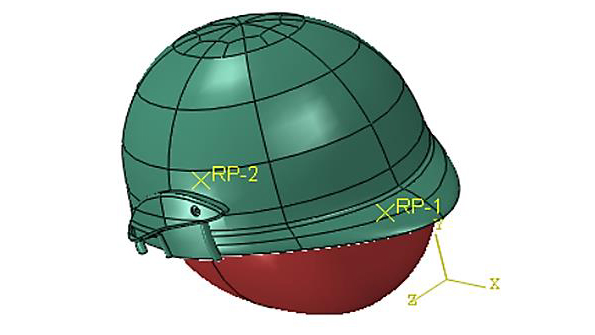Researchers compared materials used in helmets to reduce head injuries during extreme sports.
From the Journal: AIP Advances

WASHINGTON, July 15, 2025 – Though participation in sports can have positive impacts both physiologically and socially, extreme sports, like football and roller derby, come with elevated risks. In a 2019 study, over 40% of 498 athletes suffered at least one injury over the course of the year.
These injury rates are even higher in elite cricket — around 70%, with about 13% of all injuries being to the head, neck, and face — pointing to a need for improvements in protective helmets.
In AIP Advances, by AIP Publishing, researchers from Chongqing Jiaotong University and Chongqing No. 7 Middle School compared the performance of three helmet materials under the most common types of impact and loading conditions.
Multiple aspects need to be considered in choosing a protective material, including its weight and cost. Polymers and various types of plastics tend to be the most common.
“These materials are not only light, but also have high energy absorption characteristics,” said author Tao Wang.
The researchers used computational simulations to run material comparisons for helmets made of strong plastic Acrylonitrile Butadiene Styrene (ABS), fiberglass alloys, and aluminum composites. They created precise models of both the helmet geometry and the cranial structure and monitored how stress and strain were distributed after impact during cricket both within the helmet and within cerebral tissue.
They offer a few valuable insights for designers. For training and recreational sports, the researchers say ABS is sufficient, but for more elite athletes with higher risk, they suggest fiberglass or aluminum alloys. Each has its own unique benefits: though fiberglass is more brittle than aluminum, its ability to distribute stress evenly across its entire surface could result in lowering head trauma-related stress.
Cricket is one of the most popular sports in the world and involves a hard ball physically propelled at high speeds from bowler to batsman. Though the findings are valuable for all extreme sports, Wang notes the importance of customizing helmet properties to their intended activity, as the effect of an impact depends on its interaction with gravity, the potential for a rebound, and more.
“Each sport should be checked individually, because loading conditions are different in different sports,” he said.
###
Article Title
Head protection in cricket: Analysis of helmet materials for reducing traumatic brain injury risk
Authors
Chenghong Long and Tao Wang
Author Affiliations
Chongqing Jiaotong University, Chongqing No. 7 Middle School
